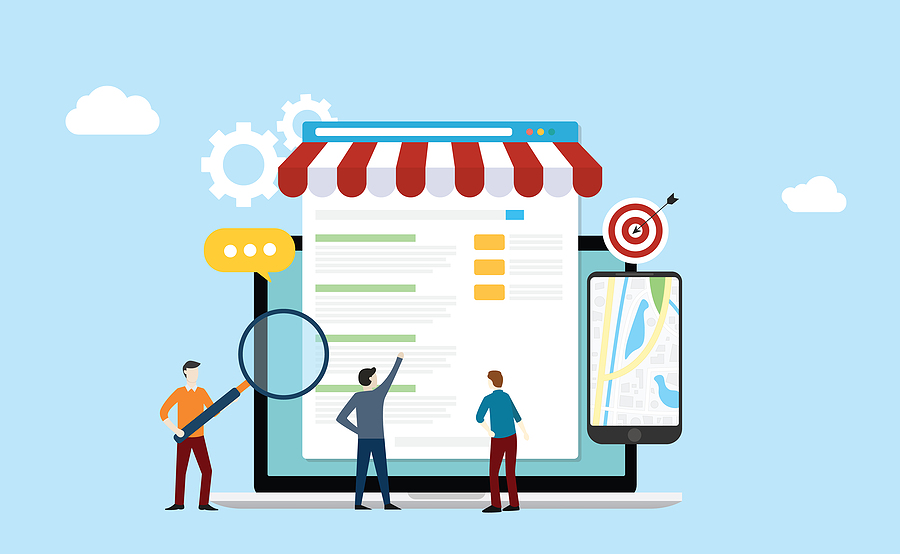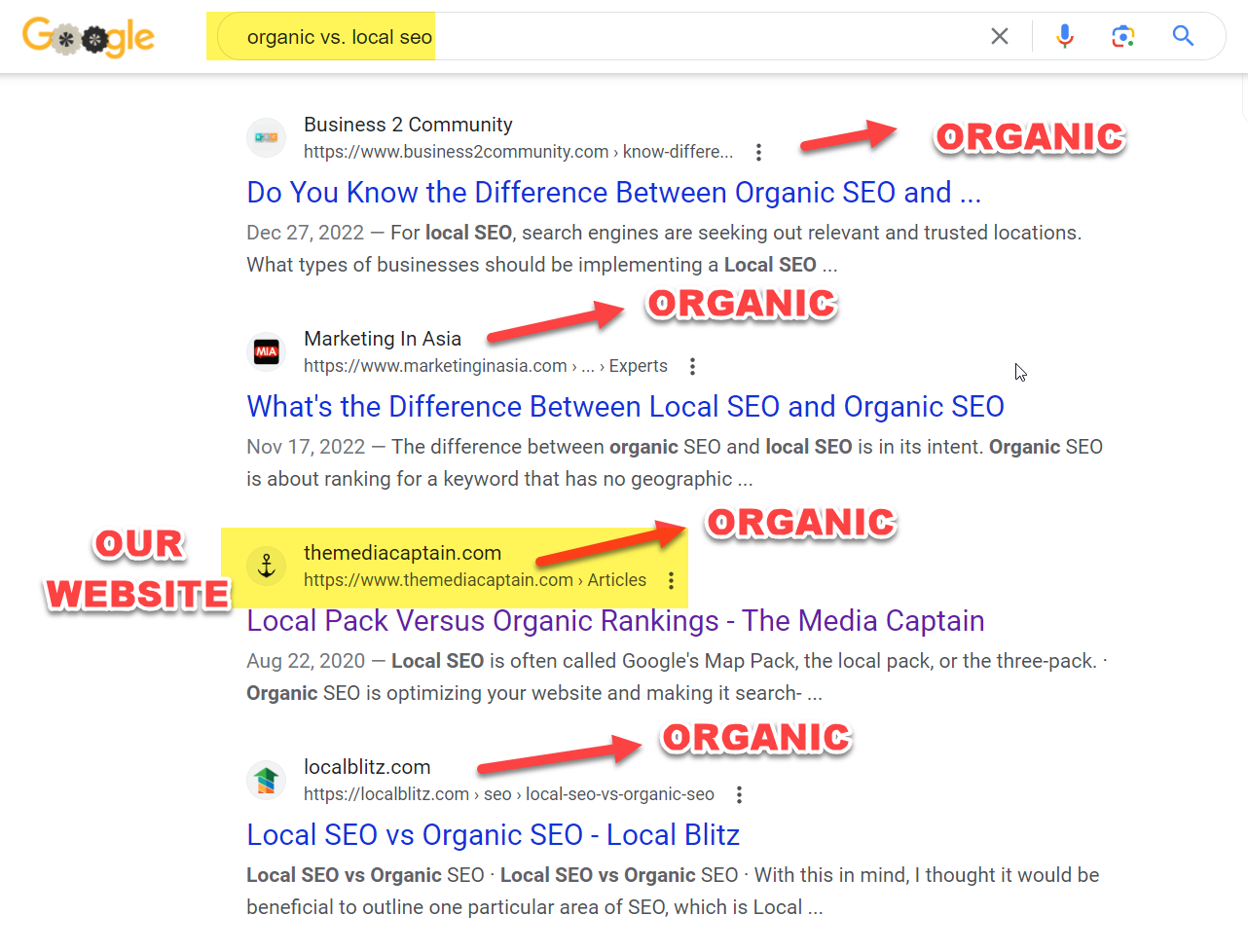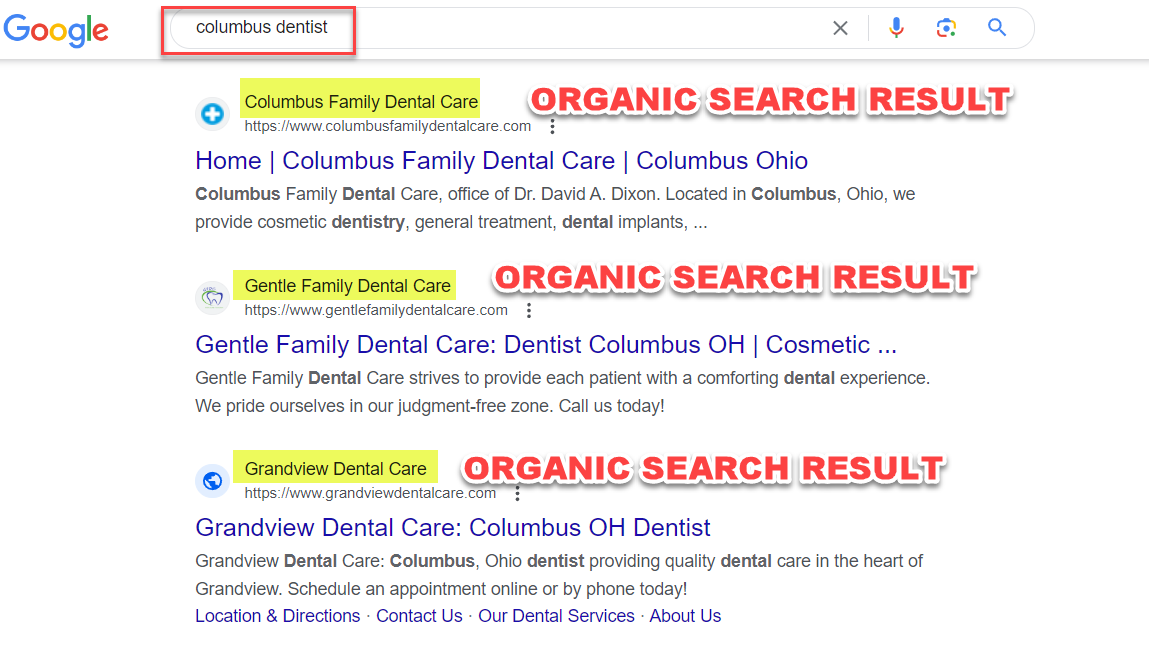What’s the difference between local SEO and organic?
- Local SEO is often called Google’s Map Pack, the local pack, or the three-pack. Local SEO is predicated based on your Google My Business page. With local SEO, you build credibility and rank well based on a specific location.
- Organic SEO is optimizing your website and making it search-engine friendly. Organic SEO aims to get your web results featured in prominent placement on Google based on desirable keywords. The location can influence your website, but it is not attached to a brick-and-mortar business.
- With Local SEO, you are tied down to a specific location regarding your ranking ability. With Organic SEO, physical location is not a barrier to ranking well. This is the main difference between Local SEO and Organic SEO.
- The Local SEO and Organic SEO results are treated as two separate entities. You could own two different placements on the first page of Google, one for organic and the other for local. Many agencies only focus on local, whereas others focus more on organic.
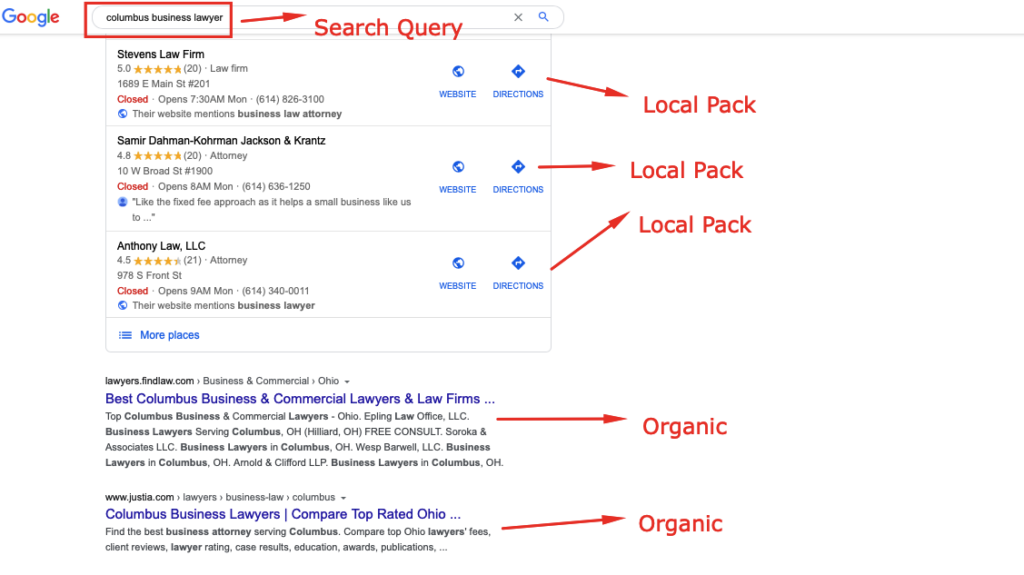
Understanding Local SEO
Local SEO is considered desirable real estate because the local pack sits at the top of Google. Local results get 44% of actual clicks on Google’s results page. It’s not easy to rank in the local pack as only three businesses get displayed on the first page results.
Related Blog: Better Optimize Your Google My Business Profile
The information displayed for a local business within the local pack consists of the following:
- Business Name
- Reviews
- Address
- Phone Number
- Hours
- Website Link
- Directions
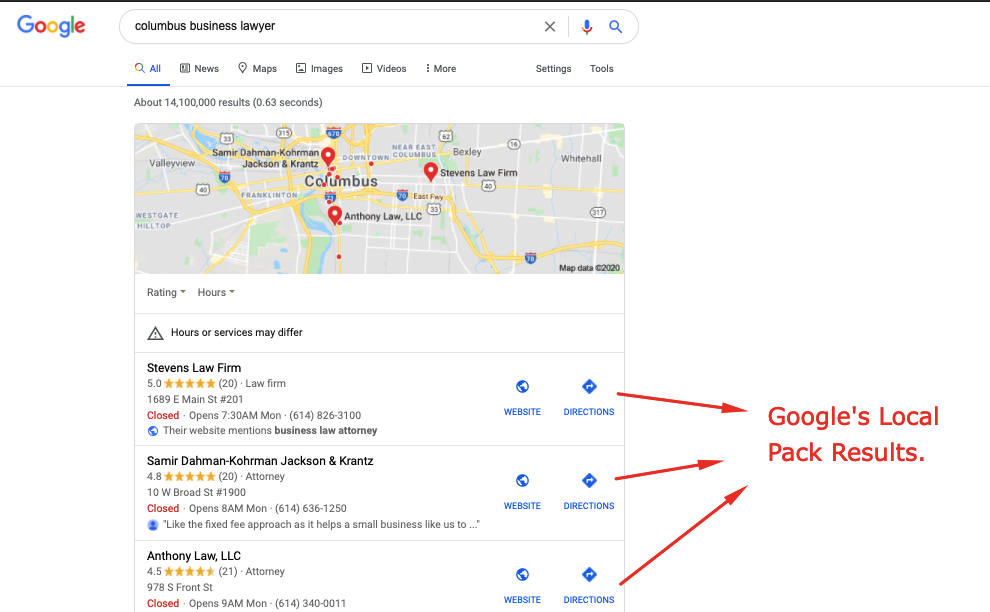
Local SEO Ranking Factors
According to Google, you can improve your business’s local ranking using Google Business Profile. Google considers the business’s relevance to the user’s search query, the proximity of the business to the user’s location, and the prominence of the business [source]. Below are other local SEO ranking factors.
- Proximity
- Where the search is taking place and where your business is located.
- Categories
- There are primary and secondary categories – Choosing the right one is important!
- Overall Authority of Website
- This considers the number of backlinks pointing to the site and the quality of those links.
- Review Signals
- Reviews on your Google My Business page.
- And Much More! I recommend reading Moz’s top local ranking factors [view here].
Understanding Organic Results
Organic SEO is an unpaid result where the webpage populates on Google. Organic results include the business name, logo, iconic blue hyperlink, description, and sometimes organic site links. Organic SEO is coveted since you don’t have to pay per click, making it profitable for businesses with strong organic rankings.
Your website (AKA organic SEO) is not tied to a specific location. This blog post, for example, can rank worldwide if someone is searching for the difference between Organic SEO and Local SEO (see below). Whereas The Media Captain’s Google My Business page is localized based on the physical address to Columbus, Ohio.
Organic SEO Ranking Factors
You will notice the optimization tactics are completely different for Organic SEO than Local SEO.
- High-Quality Content
- Backlinks
- Website Structure
- Keyword Optimization
- Site Authority
- Search Intent and Content Relevancy
- And Much More! I recommend reading Monster Insights’ list of organic ranking factors [view here].
Confusion Between Organic SEO and Local SEO
So many people get confused about the term “Local SEO” because your website can be optimized locally. It’s important to remember that if your website is enhanced for local, this is still referred to as Organic SEO.
The example below shows dental websites optimizing their title tag and content for “Columbus Dentist” and similar queries. They know that people will look at the local pack and the organic listings when deciding on a dentist. The organic listing isn’t ranking based on the Google My Business page or physical location; it’s determined from the organic SEO ranking factors referenced above. This is the exact reason why it would be classified as Organic SEO.
In Closing
- Hopefully, you now better understand Organic SEO vs. Local SEO. Both are extremely important, yet both require different strategies.
- If you are a local business and achieve local pack and organic rankings, your strong visibility should result in more leads and new business.
- If you want to expand your business nationally, nothing is holding you back from doing so on your website!


